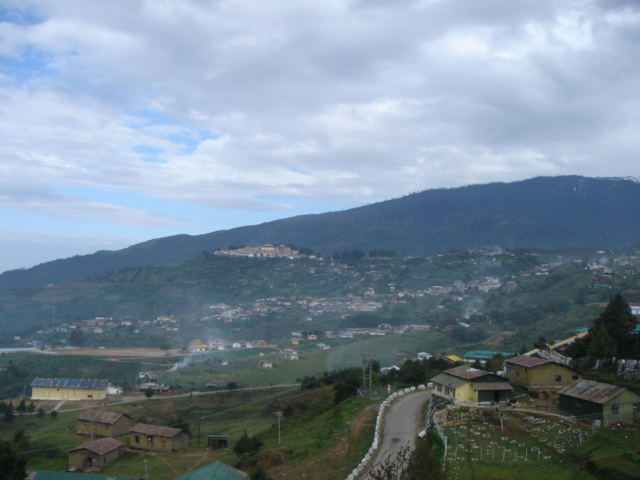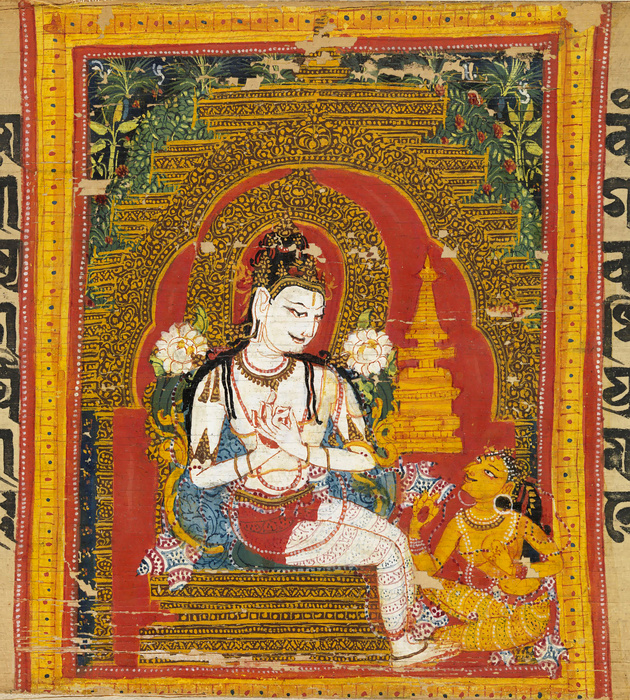|
Menchukha
Mechukha or Menchukha (In Memba dialect, 'Men' means Medicine, 'Chu' means Water -streams, rivers, etc. & 'Kha' means Snow; Meaning "the land blessed with medicinal snow-fed water- river & streams") is a town, assembly constituency and subdivision, situated above sea level in the Mechukha Valley of Yargep Chu/ Siyom River in Shi Yomi district of Arunachal Pradesh state of India. Before the 1950s, Mechuka valley was known as Pachakshiri. Line of Actual Control (McMahon Line) India-Tibet border 29 km north of Menchuka separates Indian territory and Chinese territory. Mechukha has a AGL airstrip. Reachable by one of the strategic India-China Border Roads, it is located 47 km northwest of district head office Tato and 187 km north of Aalo. Background Etymology The name ''Men-chu-kha'' means medicinal water of snow where ''men'' is medicine, ''chu'' is water and ''kha'' means ice in the local language. Menchukha has been popularly spelled as "Mechuka". History Mechuka ... [...More Info...] [...Related Items...] OR: [Wikipedia] [Google] [Baidu] |
Arunachal Pradesh
Arunachal Pradesh (, ) is a state in Northeastern India. It was formed from the erstwhile North-East Frontier Agency (NEFA) region, and became a state on 20 February 1987. It borders the states of Assam and Nagaland to the south. It shares international borders with Bhutan in the west, Myanmar in the east, and a disputed border with China in the north at the McMahon Line. Itanagar is the state capital of Arunachal Pradesh. Arunachal Pradesh is the largest of the Seven Sister States of Northeast India by area. Arunachal Pradesh shares a 1,129 km border with China's Tibet Autonomous Region. As of the 2011 Census of India, Arunachal Pradesh has a population of 1,382,611 and an area of . It is an ethnically diverse state, with predominantly Monpa people in the west, Tani people in the centre, Mishmi and Tai people in the east, and Naga people in the southeast of the state. About 26 major tribes and 100 sub-tribes live in the state. The main tribes of the state a ... [...More Info...] [...Related Items...] OR: [Wikipedia] [Google] [Baidu] |
Member Of The Legislative Assembly (India)
A Member of the Legislative Assembly (MLA) is a representative elected by the voters of an electoral district (constituency) to the legislature of State government in the Indian system of government. From each constituency, the people elect one representative who then becomes a member of the Legislative Assembly (MLA). Each state has between seven and nine MLAs for every Member of Parliament (MP) that it has in the Lok Sabha, the lower house of India's Bicameralism, bicameral Parliament of India, parliament. There are also members in three unicameral legislatures in Union Territories: the Delhi Legislative Assembly, Jammu and Kashmir Legislative Assembly and the Puducherry Legislative Assembly. Only a Member of the Legislative Assembly can work as a minister for more than 6 months. If a non-Member of the Legislative Assembly becomes a Chief Minister or a minister, he must become an MLA within 6 months to continue in the job. Only a Member of the Legislative Assembly can become ... [...More Info...] [...Related Items...] OR: [Wikipedia] [Google] [Baidu] |
Tagin Language
Tagin (Tagen), also known as West Dafla and Bangni (incl. Na) is a Sino-Tibetan language Sino-Tibetan, also cited as Trans-Himalayan in a few sources, is a family of more than 400 languages, second only to Indo-European in number of native speakers. The vast majority of these are the 1.3 billion native speakers of Chinese languages. ... spoken in India. Paper presented at the 13th Himalayan Languages Symposium. Canberra, Australian National University, 9 August 2013. Stuart Blackburn states that the 350 speakers of Mra have "always been, wrongly, subsumed under the administrative label of Tagin." It is not clear whether Mra is therefore a distinct dialect of Bangni-Tagin, or a different Tani language altogether. References Languages of Assam Tani languages Languages of Arunachal Pradesh {{st-lang-stub ... [...More Info...] [...Related Items...] OR: [Wikipedia] [Google] [Baidu] |
Adi Language
Adi or ADI may refer to: Names and titles * Adi (mythology), an Asura in Hindu faith who appears in the Matsya Purāṇa * Adi (name), a given name in Hebrew and a nickname in other languages * Adi (title), a Fijian title used by females of chiefly rank Places * Adi (Khanapur), Belgaum District, Karnataka, India * Adi (Chikodi), Belgaum District, Karnataka, India * Ahmedabad Junction railway station, Ahmedabad, India (code ADI) * Adi, Israel, a community settlement in northern Israel * Adi Island, an island in West Papua, Indonesia * Arandis Airport, Arandis, Namibia (IATA: ADI) Organizations * Aerodynamics Inc., a small airline in the US * Aircraft Designs Inc, an aircraft design firm in Monterey, California * Alfred Deakin Institute, at Deakin University#Research, Deakin University, in Geelong, Australia * American Documentation Institute, former name of the Association for Information Science and Technology * Analog Devices, Inc, producer of semiconductors (ADI is their sym ... [...More Info...] [...Related Items...] OR: [Wikipedia] [Google] [Baidu] |
Tshangla Language
Tshangla is a Sino-Tibetan language of the Bodish branch closely related to the Tibetic languages. Tshangla is primarily spoken in Eastern Bhutan and acts as a lingua franca in the region; it is also spoken in the adjoining Tawang tract in the Indian state of Arunachal Pradesh and the Pemako region of Tibet. Tshangla is the principal pre-Tibetan language of Bhutan. Classification Tshangla is frequently assumed to be close to the Tibetic languages. Bradley (2002) includes in among the East Bodish languages. Van Driem (2011), however, leaves it unclassified within Sino-Tibetan, pending further research. Bodt (2012:188-189) classifies Tshangla as a Bodish language, but notes that Tshangla (like East Bodish) is related to, but not directly descended, from Classical Tibetan. Varieties Tshangla is a dialect cluster consisting of a few mutually unintelligible language varieties, including (Gerber 2018):Gerber, Pascal. 2018. Areal features in Gongduk, Bjokapakha and Black Mounta ... [...More Info...] [...Related Items...] OR: [Wikipedia] [Google] [Baidu] |
Tawang Monastery
Tawang Monastery, located in Tawang city of Tawang district in the Indian state of Arunachal Pradesh, is the largest monastery in India. It is situated in the valley of the Tawang Chu, near the small town of the same name in the northwestern part of Arunachal Pradesh, in close proximity to the Chinese and Bhutanese border. Tawang Monastery is known in Tibetan as Gaden Namgyal Lhatse, which translates to "the divine paradise of complete victory." It was founded by Merak Lama Lodre Gyatso in 1680–1681 in accordance with the wishes of the 5th Dalai Lama, Ngawang Lobsang Gyatso. It belongs to the Gelug school of Vajrayana Buddhism and had a religious association with Drepung Monastery of Lhasa, which continued during the period of British rule. The monastery is three stories high. It is enclosed by a long compound wall. Within the complex there are 65 residential buildings. The library of the monastery has valuable old scriptures, mainly Kangyur and Tengyur. Etymology The f ... [...More Info...] [...Related Items...] OR: [Wikipedia] [Google] [Baidu] |
Mahayana
''Mahāyāna'' (; "Great Vehicle") is a term for a broad group of Buddhist traditions, texts, philosophies, and practices. Mahāyāna Buddhism developed in India (c. 1st century BCE onwards) and is considered one of the three main existing branches of Buddhism (the other being ''Theravāda'' and Vajrayana).Harvey (2013), p. 189. Mahāyāna accepts the main scriptures and teachings of early Buddhism but also recognizes various doctrines and texts that are not accepted by Theravada Buddhism as original. These include the Mahāyāna Sūtras and their emphasis on the ''bodhisattva'' path and ''Prajñāpāramitā''. '' Vajrayāna'' or Mantra traditions are a subset of Mahāyāna, which make use of numerous tantric methods considered to be faster and more powerful at achieving Buddhahood by Vajrayānists. "Mahāyāna" also refers to the path of the bodhisattva striving to become a fully awakened Buddha ('' samyaksaṃbuddha'') for the benefit of all sentient beings, and is thu ... [...More Info...] [...Related Items...] OR: [Wikipedia] [Google] [Baidu] |
Christianity
Christianity is an Abrahamic monotheistic religion based on the life and teachings of Jesus of Nazareth Jesus, likely from he, יֵשׁוּעַ, translit=Yēšūaʿ, label=Hebrew/Aramaic ( AD 30 or 33), also referred to as Jesus Christ or Jesus of Nazareth (among other names and titles), was a first-century Jewish preacher and religious .... It is the Major religious groups, world's largest and most widespread religion with roughly 2.38 billion followers representing one-third of the global population. Its adherents, known as Christians, are estimated to make up a majority of the population in Christianity by country, 157 countries and territories, and believe that Jesus in Christianity, Jesus is the Son of God (Christianity), Son of God, whose coming as the Messiah#Christianity, messiah was Old Testament messianic prophecies quoted in the New Testament, prophesied in the Hebrew Bible (called the Old Testament in Christianity) and chronicled in the New Testamen ... [...More Info...] [...Related Items...] OR: [Wikipedia] [Google] [Baidu] |
Donyi-Polo
Donyi-Polo (also Donyi-Poloism) is the designation given to the indigenous religion, of animistic and shamanic type, of the Tani and other Tibeto-Burman peoples of Arunachal Pradesh and Assam in Northeast India. The name "Donyi-Polo" means "Sun-Moon", and was chosen for the religion in the process of its revitalisation and institutionalisation. The Donyi- Poloism has been there from since immemorial. The religion has developed a congregational system; hymns to be sung, composed in the Tani ritual language of shamans; a formalised philosophy-theology; and an iconography of the gods and temples. The pioneer of the revival was Talom Rukbo. Donyi-Polo is related to the Hemphu-Mukrang religion of the Karbi and the Nyezi-No of the Hruso. Theology and cosmology ''Sedi'' and ''Keyum'' In the Donyi-Polo belief, the fountain god that begets the universe (God or the Godhead) is referred to as ''Sedi'' by the Minyong and Padam, ''Jimi'' by the Galo. All things and beings are parts of ... [...More Info...] [...Related Items...] OR: [Wikipedia] [Google] [Baidu] |

.jpg)

